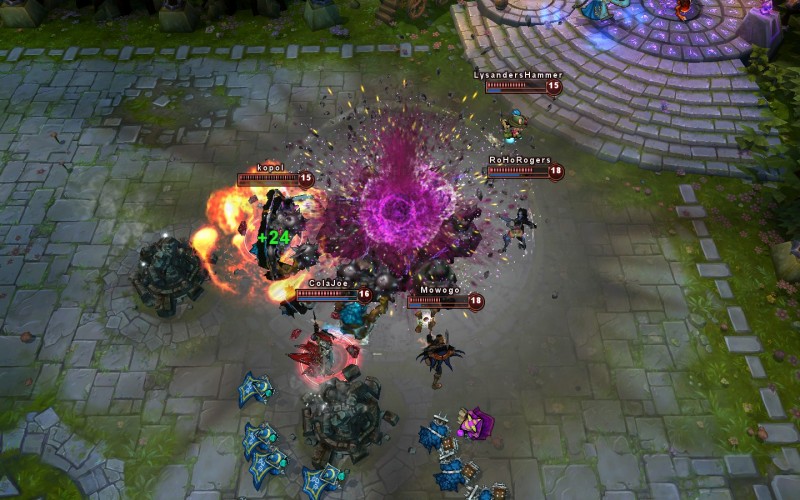Kill Screen's Two5Six Explores Intersection Of Gaming And Other Disciplines

On a rainy day in Brooklyn, New York, Kill Screen Magazine assembled an eclectic pool of speakers befitting its erudite approach to the video game medium. Gathered on the third floor of the Invisible Dog Art Center (originally home to the factory responsible for the eponymous novelty toys), Kill Screen founder Jamin Warren welcomed us to a full day of moderated talks, two of which caught especially caught our attention.

Jeffrey Yohalem, lead writer of Far Cry 3 on Inspiration and Interpretation
During the first talk of the day, we had a chance to hear from Far Cry's lead writer, Jeffrey Yohalem. He opened up about his influences and intent behind Far Cry 3. "Disneyland is a huge influence for me," he said. "Games are curated galleries. Even if you only see pieces, you still get a sense of the curation."
He told the audience that his purpose in writing Far Cry 3, a first-person shooter and a genre he typically has trouble with, was to point that addictive, fun loops can be bad for us. He also explained that the tattoos used to convey the different skill trees and the player's progress are like Pokémon.
To illustrate the point, he showed a heavily edited clip of protagonist Jason Brody first revealing his brother's death to another character and then celebrating narrow escapes from harm and capture.
The video finishes with a scene toward the end of the game in which Jason must mercilessly beat his younger brother to maintain a disguise as one of the island's mercenaries. When I played through the game, it was a gut-wrenching moment, and one that was truly disturbing. Yohalem's take on it surprised me.
"The video is a distillation of the main character's journey," Yohalem explained. At the beginning, he is empathetic. His friends are kidnapped by pirates and his brother killed. The player then goes off and has fun in Never Never Land and gets all these tattoos. Ultimately, at the end there, you're beating up the main character's little brother to have fun."

Riot Games Gives Community Members Control Over Player Behavior And Backs Them Up With Neuroscience
We've all dealt with challenging players online, and there are websites devoted to the pleas of those voices snuffed out by the ban hammer. But what happens when a developer approaches community management with the hopes of reforming rather than terminating the disruptive elements?
Riot Games has dedicated itself to creating and fostering one of the friendliest communities in online gaming for League of Legends. Their success is due in large part to the work of Jeffrey Lin, lead designer of social systems at Riot. Lin leads the player behavior team and is working daily to address one of the most challenging questions in all of online gaming, "Can you solve the problem of toxic communities?"
In order to address the negative element, which is a minority of players, Riot has instituted a tribunal system that "bubbles the most negative players to the top," according to Lin. From there, players vote on the actions that will be taken against reported community members.
The end result is that the community perspective on specific offensive behavior has evolved and matured. For instance, as the players struggled to deal with the question of profanity, it was determined that casual use is acceptable, but once directed at another person, it becomes a violation.
Lin and his team also learned that an overwhelming majority of toxicity (reported events) comes from infrequent offenders and that only 2 percent of users fall outside the "neutral" or "positive" categories. Lin attests that banning not only does not work, but in a free to play game, actually exacerbates the problem. "They'll just make a new account and infect lower level and new players," he explained.
In the event that players are banned for continued offenses, Riot sends a "reform card" that details chat logs, game events, item builds, and the specific game that triggered the ban. Lin believes that telling players why they are banned matters, and the apologies that Riot has received are evidence.
Lin didn't stumble upon a magic formula for guiding player behavior. He holds a Ph.D. in cognitive neuroscience from the University of Washington, and his work includes the use of priming (in this case, using different colors of a loading-screen tip and observing behaviors among similarly exposed groups). His team also uses spike charts to compare the behavior of "toxic" players and the rest of the community, which is how Riot determined the source of disapproved behaviors.
If you've ever wondered why the League of Legends community is so much friendlier than most others, you can thank Jeffrey Lin.

Get the Game Informer Print Edition!
Explore your favorite games in premium print format, delivered to your door.
- 10 issues per year
- Only $4.80 per issue
- Full digital magazine archive access
- Since 1991









